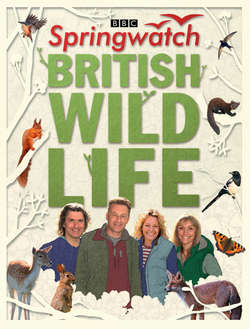Читать книгу Springwatch British Wildlife: Accompanies the BBC 2 TV series - Stephen Moss - Страница 22
ОглавлениеWarblers
©Robin Chittenden/FLPA
©John Hawkins/FLPA
©Neil Bowman/FLPA
Warbles such as the willow warbler, blackcap and whitethroat migrate long distances to their wintering grounds in Africa.
Britain’s warblers fall into three main groups: the leaf warblers (willow, wood and chiffchaff), mainly found in wooded habitats; the scrub warblers (blackcap, garden warbler, Dartford warbler, whitethroat and lesser whitethroat), which prefer more open habitats; and the wetland warblers (sedge, reed, Cetti’s and grasshopper), which tend to be found in or near reed beds and other wetland habitats.
The warblers are both fascinating and frustrating: fascinating, because they are one of the most diverse of all our songbird families, travelling thousands of kilometres on their migratory journeys across the globe; and frustrating, because they are often shy and elusive. Even when you manage to catch a glimpse of one, it may be hard to identify – some of our warblers really do live up to their reputation as ‘little brown jobs’!
And yet when you get to know them, the differences between them do begin to become clear. Some, like the blackcap and whitethroat, are actually quite easy to identify, thanks to the plumage feature that gives each species its name, but beware female blackcaps, whose crown is a chestnut-brown colour! Sedge warblers, too, are easy to identify, thanks to their streaky plumage and habit of sitting out in the open to sing.
Others, such as the garden warbler and reed warbler, are not only skulking in their habits but also more or less lacking any obvious identification feature – that is, to look at. With these birds – and with so many other warblers – you have to listen to their songs and, ideally, learn them by heart, making the birds much easier to identify. Indeed, the leaf warbler trio provided pioneering eighteenth-century naturalist Gilbert White (author of the bestselling book The Natural History of Selborne) with the opportunity to make his name by telling the three very similar species apart – which he did by song rather than plumage.
Cetti’s and grasshopper warblers, which both live in scrubby wetland habitats, are notoriously elusive, and are almost always heard rather than seen. Fortunately, both have very distinctive songs: the grasshopper warbler does indeed sound rather like an insect, though its long-running trilling song has also been likened to a fishing reel being wound, or a bicycle wheel freewheeling. Cetti’s warbler, named after the eighteenth-century Italian Jesuit priest and ornithologist Francesco Cetti, has an extraordinary song: a series of incredibly loud notes uttered in a burst of energy from deep inside the dense foliage of a bush.
Most British warblers are long-distance migrants, heading off each autumn on the long and perilous journey to sub-Saharan Africa. The exceptions are Dartford and Cetti’s warblers, which are totally resident, and blackcap and chiffchaff, which are partial migrants. Most individuals of the latter two species head to Spain or North Africa for the winter, but some chiffchaffs stay put in southwest Britain, where the climate is mild enough for them to find the insect food they need to survive the cold weather.
The two resident species, Dartford and Cetti’s warblers, are especially vulnerable to harsh winters. In the Big Freeze of 1962–63, the Dartford warbler was almost wiped out, but in the following decades it recovered, thanks to a run of mild winters. It can now be found in East Anglia as well as its traditional heathland home of Dorset and the New Forest. Cetti’s warbler is a new arrival to our shores, having colonised southern England from across the Channel in the early 1970s. Since then, it has had its ups and downs, but, like its cousin, it is now thriving, and expanding its range farther north every year.
The blackcap’s story is more complicated. Several decades ago, a small population of blackcaps from Central Europe migrated west instead of southwest, and ended up in Britain. They found a mild winter climate and plenty of food in our gardens, and prospered, so that now almost all this blackcap population winters here in Britain rather than farther south.
©Derek Middleton/FLPA
The chiffchaff is one of the first migrants to return in spring, usually in March.
©Derek Middleton/FLPA
©David Tipling/FLPA
Dartford and Cetti’s warblers are both resident in Britain, so are very vulnerable to hard winters.
